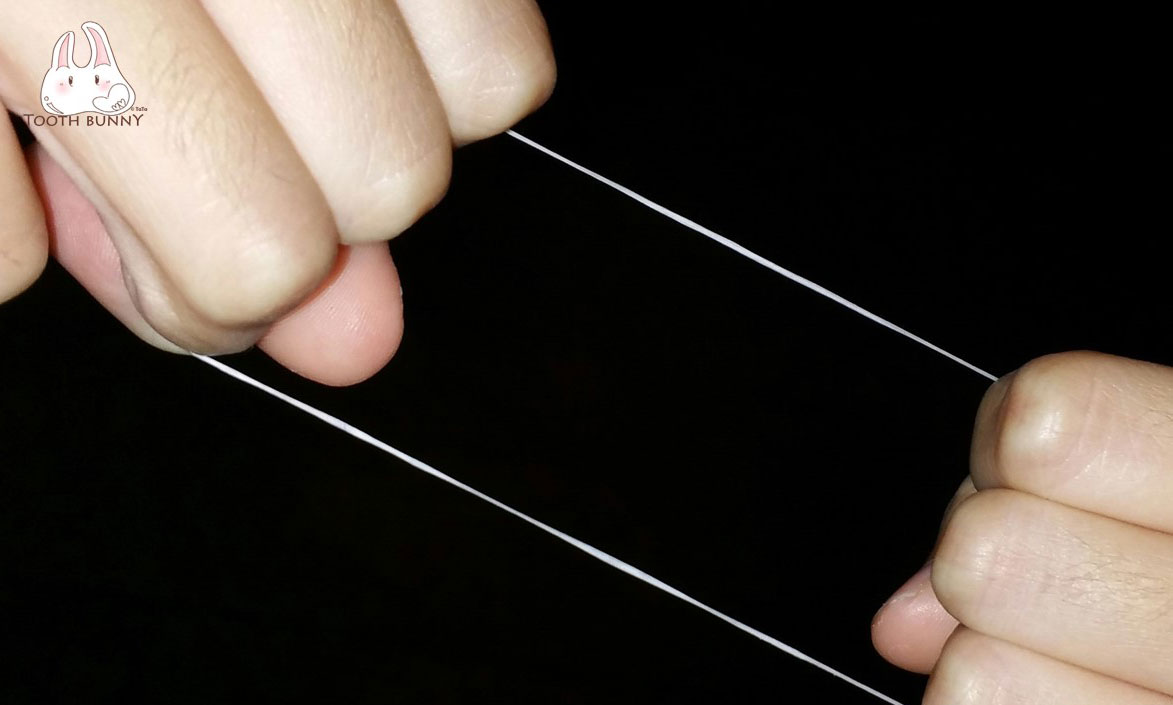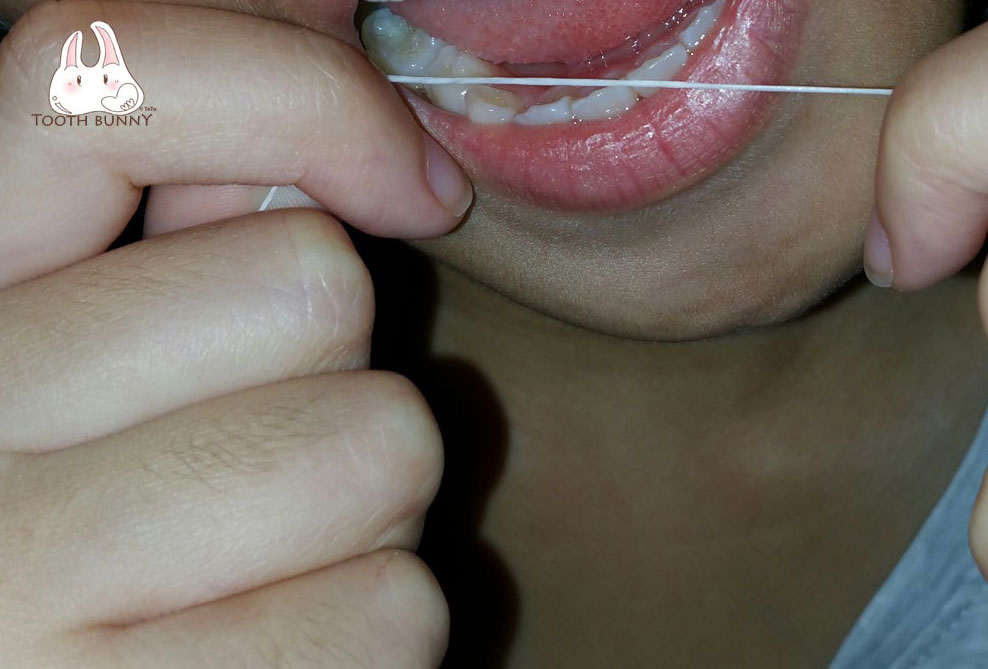Recently, one of my friends shared that her children went to see their local dentist for a check up over the school holidays and were asked if dental flossing was done. Big brother replied honestly, “Not all the time”. He was advised to do better. At home that night, little sister asked to have her teeth flossed saying, “The dentist said to floss every day.” Big brother flossed too, somewhat reluctantly. Perhaps he was thinking, “Floss, floss, go away. Let’s floss teeth another day”?!
“Not flossing regularly”, is, common.
Even a few of my dental friends - trained in protecting teeth and gums, confessed that they find it difficult to “do what dentistry has always preached” about daily flossing.
I must confess, I go astray occasionally too. Usually obsessed with my teeth and gum care, I feel guilty on days when I have to rush through my oral hygiene routine. Despite that, I have fallen into the “let’s skip flossing tonight, it’s too late or I’m too tired or I’ve run out of floss” domain from time to time.
Have you?
Common Reasons For Not Flossing
Children and adults love all sorts of floss that go in the mouth – fairy floss, candy floss, pork floss (Asian “rousong”), fish floss; so why not dental floss?
According to a 2017 study in the European Archives of Paediatric Dentistry, the official journal of the European Academy of Paediatric Dentistry, a lack of motivation and self-reported laziness appear to be most strongly associated with not flossing.(1)
A Brazil study published in the Oral Health and Preventive Dentistry journal in 2016, reported that flossing is more likely to be performed in high family income households where mothers were of a younger age (<35yo) and received higher education.(2)
Anecdotally, perceived negativity with flossing e.g. “flossing hurts”, “flossing caused gums to bleed”, “flossing is too difficult”, “flossing takes too much time” are also frequently reported as reasons for not flossing.
Is Flossing Important ?
Just because the uptake for regular flossing is low, does it equate to flossing being not so important?
In short, flossing is important.
A 2011 Cochrane review concluded that there is some evidence to support regular dental flossing in addition to toothbrushing in the prevention of gum diseases but the evidence for dental caries is not available.(3)
This is not because dental flossing is irrelevant. Rather, it is probably because flossing is so well recognized as being important already, that there are not much research studies conducted on the efficacy of dental flossing. Dr Shmerling of Harvard Health Publications put it this way, “There’s a saying in the science world that “absence of proof isn’t proof of absence.” That is, just because the evidence isn’t there doesn’t mean an idea is wrong. Unproven is unproven, not disproven!”
Globally, the consensus among dental, oral health and public health associations such as the World Dental Federation, World Health Organization and key stakeholders worldwide is that healthy teeth and gums are best maintained by “a low sugar, well-balanced diet, toothbrushinig twice a day with fluoride toothpaste, cleaning between teeth once a day and regular dental visits”.
For children and adolescents, effective dental flossing between teeth assists with removing dental plaque, thereby contributing to the prevention of interproximal tooth decay (decay affecting the sides of teeth).(4,5) There are a few studies that have shown that primary teeth with no interdental spacing between them, have highest interproximal caries risk.(6,7)
Dental flossing, like toothbrushing, is a life skill that could bring about benefits for a lifetime. Realistically though, let’s not expect our children to be able to floss their own teeth, until they reach about 10yrs of age.
How To Floss Effectively For Children ?
Floss daily. Any time of the day. But do it. There are no studies available to support or refute flossing before or after toothbrushing. Traditional belief advises flossing before toothbrushing, so that food debris and dental plaque from in between teeth can be removed and allow fluoride from toothpaste to penetrate. This kind of make sense. If toothbrushing first, then wouldn’t food debris and dental plaque from flossing contaminate the tooth surfaces that you just painstaking cleaned?
Turn on all the lights. If you can shine a light into the mouth even better. Being able to see clearly is the key to effective flossing (and less damage to the gum).
At home, I find sitting my child either on my left leg or on a chair e.g. dinning chair or recliner chair and coming from behind them on the right (as I’m right handed), makes flossing easiest. However, that may simply be a personal preference as that resembles how I generally perform procedures in a dental clinic.
Make sure the floss is cleaning not only at the teeth contact areas but also the “gumline or gingival sulcus” i.e. the tiny space between the neck of the tooth and the pink gum. See-saw the floss in and out gently will increase comfort and prevent cutting the gum. Try to keep floss debris-free by using a new section of the floss for each pair of teeth or rinsing off food debris under the tap (e.g. if using flossettes).
Ways to Make Dental Flossing Easier and More Fun
Have a few options available at home. Allowing children to choose immediately makes it more fun for them.
Use any type of dental floss. Waxed. Unwaxed. Thick. Thin. Tape. Ribbon. Minted. Coloured. It really does not matter, as long as the piece of floss glides easily in between the teeth. When using floss, I find making the floss into a bracelet by tying a knot, makes it easier to handle and avoids blue fingers from the ever tightening floss. This is also a good way for teaching children to use floss (and saves on the lengths of floss too). Alternatively, a floss threader or floss handle can also save the fingers from turning blue.
Flossettes or flossers are good alternatives to standard floss. I love using flossettes because I don’t have to get my fingers into my child’s mouth, which makes it more comfortable for her. Flossettes come in all sizes, shapes and types of floss too. Choose one that fits your child’s mouth easily. Wet the floss part slightly before use makes for easier glide. At the moment, I’m using a brand of small flossettes that come in a variety of colours and flavours (grape, mango, orange, strawberry and apple) for my child. Ever since I started using these flossettes, there’s been no complaints; quite the contrary, Katelyn wants to floss all the time!
Electric flossers are also available. Some love them. Some don’t. My take: if they make flossing easier, more effective and more comfortable, use them. However, it is still important to teach children how to floss manually.
Last but not least, the literature suggests the following ways to motivate regular dental flossing:
- “Positive attitudes impacted directly on flossing habit formation”(Judah et al., 2016)(8)
- Being flexible with when flossing is carried out (Judah et al., 2016)(8)
- Keeping a flossing diary to monitor dental flossing habit (Suresh et al., 2012)(9)
- Having targeted oral health instruction and designated oral hygiene time during school (Lai et al., 2016)(10)
I love the idea of keeping a flossing diary. There are apps such as “Floss, Your Habit Coach”, “Goal Tracker & Habit List” available now to do that these days.
If you know of any handy apps or other ways to motivate regular dental flossing, please do message me. In my opinion, you can never have too many tricks in your bag as a parent or a dentist.
REFERENCES
- Mattos-Silveira J, Matos-Lima BB, Oliveira TA, Jarroug K, Rego RV, Reyes A, Ferreira FR, Imparato JC, Braga MM. Why do children and adolescents neglect dental flossing? Eur Arch Paediatr Dent 2017 Feb: 18(1): 45-50. doi: 10.1007/s40368-016-0266-4.
- Kauer B, Schutz J, Colussi PR, Oppermann RV, Haas AN, Rosing CK. Self-reported use of dental floss over 13 years: relationship with family income, mother’s age and education level. Oral Health Prev Dent 2016; 14(1): 33-39. doi: 10.3290/j.ohpd.a34375.
- Sambunjak D, Nickerson JW, Poklepovic T, Johnson TM, Imai P, Tugwell P, Worthington HV. Flossing for the management of periodontal diseases and dental caries in adults. Cochrane Database Syst Rev 2011 Dec 7; (12):CD008829. doi: 10.1002/14651858.CD008829.pub2.
- Longbottom C. Professional flossing is effective in reducing interproximal caries risk in children who have low fluoride exposures. Evid Based Dent 2006; 7(3): 68.
- Corby PM, Biesbrock A, Bartizek R, Corby AL, Monteverde R, Ceschin R, Bretz WA. Treatment outcomes of dental flossing in twins: molecular analysis of the interproximal microflora. J Periodontol 2008; 79(8):1426-1433. doi: 10.1902/jop.2008.070585.
- Warren JJ, Slayton RL, Yonezu T, Kanellis MJ, Levy SM. Interdental spacing and caries in the primary dentition. Pediatr Dent 2003; 25(2):109-113.
- Allison PJ, Schwartz S. Interproximal contact points and proximal caries in posterior primary teeth. Pediatr Dent 2003; 25(4):334-340.
- Judah G, Gardner B, Aunger R. Forming a flossing habit: an exploratory study of the psychological determinants of habit formation. Br J Health Psychol 2013 May; 18(2): 338-353.doi: 10.1111/j.2044-8287.2012.02086.x.
- Suresh R, Johnes KC, Newton JT, Asimakopoulou K. An exploratory study into whether self-monitoring improves adherence to daily flossing among dental patients. J Public Health Dent 2012; 72(1): 1-7. doi: 10.1111/j.1752-7325.2011.00274.x.
- Lai H, Fann JC, Yen AM, Chen LS, Lai MH, Chiu SY. Long-term effectiveness of school-based children oral hygiene program on oral health after 10-year follow-up. Community Dent Oral Epidemiol 2016; 44(3): 209-215. doi: 10.1111/cdoe.12207.




